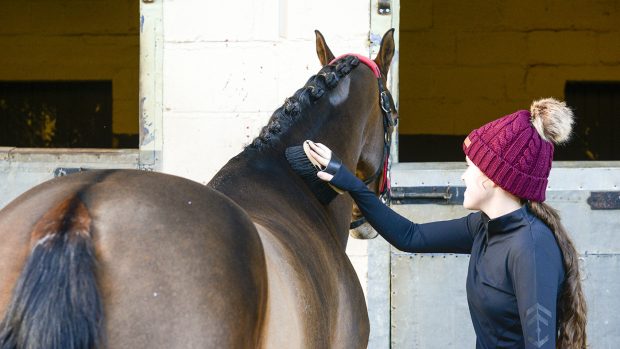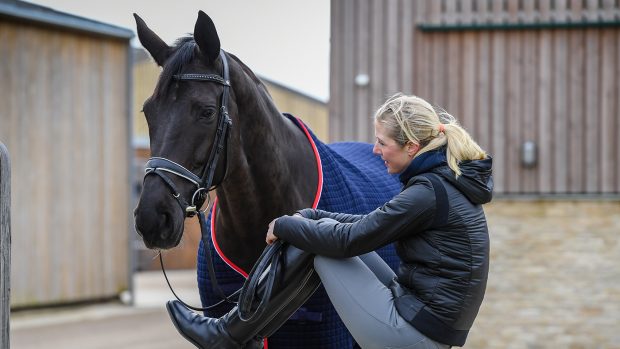Four-time Olympian Jennie Loriston-Clarke, one of the UK’s leading trainers and breeders, on breeding horses for longevity
SOUNDNESS is such an important topic from a breeding point of view. Many dressage horses seem to require specialist treatments during their careers nowadays, and I wonder whether this is because we are now breeding horses to have such huge, elastic paces that their bones and joints can’t quite keep up with the amount of pressure put on them.
It’s certainly the case that these big-movers need to be treated much more delicately than a horse with more normal paces. I have seen some marvellous young horses at the World Breeding Championships and, closer to home, at the Futurity championships, that don’t appear to have continued with a career in sport. Where are they all now?
Horses’ soundness records should be considered when making breeding decisions. A horse bred with very little bone beneath the knee, for example, is likely to have more strain placed on the tendons and joints. A sport horse must have enough bone to carry its own weight, plus that of the rider and equipment, yet still have the quality and athleticism required to do its job.
Focusing on good, sound conformation when assessing a dam and sire is important, as is correct, straight movement and a trainable temperament.
A fine line
I REMEMBER Ferdi Eilberg once saying that you must be able to ride 25 steps of piaffe at home for a horse not to get fatigued doing 15 steps in the ring. Dressage movements such as piaffe, passage and tempi changes are natural for a horse, but they will only do them spontaneously for very short periods of time, for example out in the field. We ask much more of our horses in a grand prix dressage test.
So it is important to have a horse fit enough to perform these movements without getting too fatigued and risking an injury. But there is also a fine line between having the horse fit enough and overtraining – it is easy to get over-enthusiastic when working at home.
Remember to include walk and rest periods in your schooling sessions – and that you don’t need to ride the whole dressage test over and over again.
Correct basics
SOME riders ask too much from young horses too soon. As far as I’m concerned, the more spectacular the movement, the less that horse should be shown as a youngster, unless they really are very strong. The basics are more important at those early stages than the wow factor, but in showing correct training it’s possible to give judges a glimpse of what is to come.
Young horse classes and championships are great, but I do see horses that are pushed further than they are ready for at that stage in their development. I wish more people would realise that a horse can still become a perfectly good grand prix horse even if it takes a little more time.
The last thing you want to do is force it with a horse that isn’t mentally or physically ready, so stand back and assess the horse’s brain as well as its body. Would it benefit from competing in a young horse class, or from a few more months turned away in the field? If you’re not sure, there are plenty of knowledgeable people out there to ask for advice or a second opinion.
Change of scenery
NOWADAYS, so many shows seem to offer horse walks, where you can introduce horses to the competition arena in advance of your test.
Years ago, the only time that was ever available was at the Olympic Games. But then again, dressage horses in those days often hunted all winter – I find today’s top horses are much more cosseted.
At Catherston, we take our dressage horses out hacking, and into the field to do canter work – it is good for them to go on different terrain rather than just round an arena, and it offers a change of scenery.
While it’s important not to overdo it, introducing variety into a young horse’s training, for example polework or cavaletti, and getting them out of the arena every so often, can really help with spookiness, and to condition them for going to new places.
- This exclusive column will also be available to read in Horse & Hound magazine, on sale Thursday 7 April
You may also be interested in…

‘I’m so excited for him as a team horse’: meet Charlotte Dujardin’s next superstar

Carl Hester: ‘Can we recreate Aachen in Britain?’

Anna Ross: ‘Emerging dressage nations need a voice, too’

Subscribe to Horse & Hound this spring for great savings




